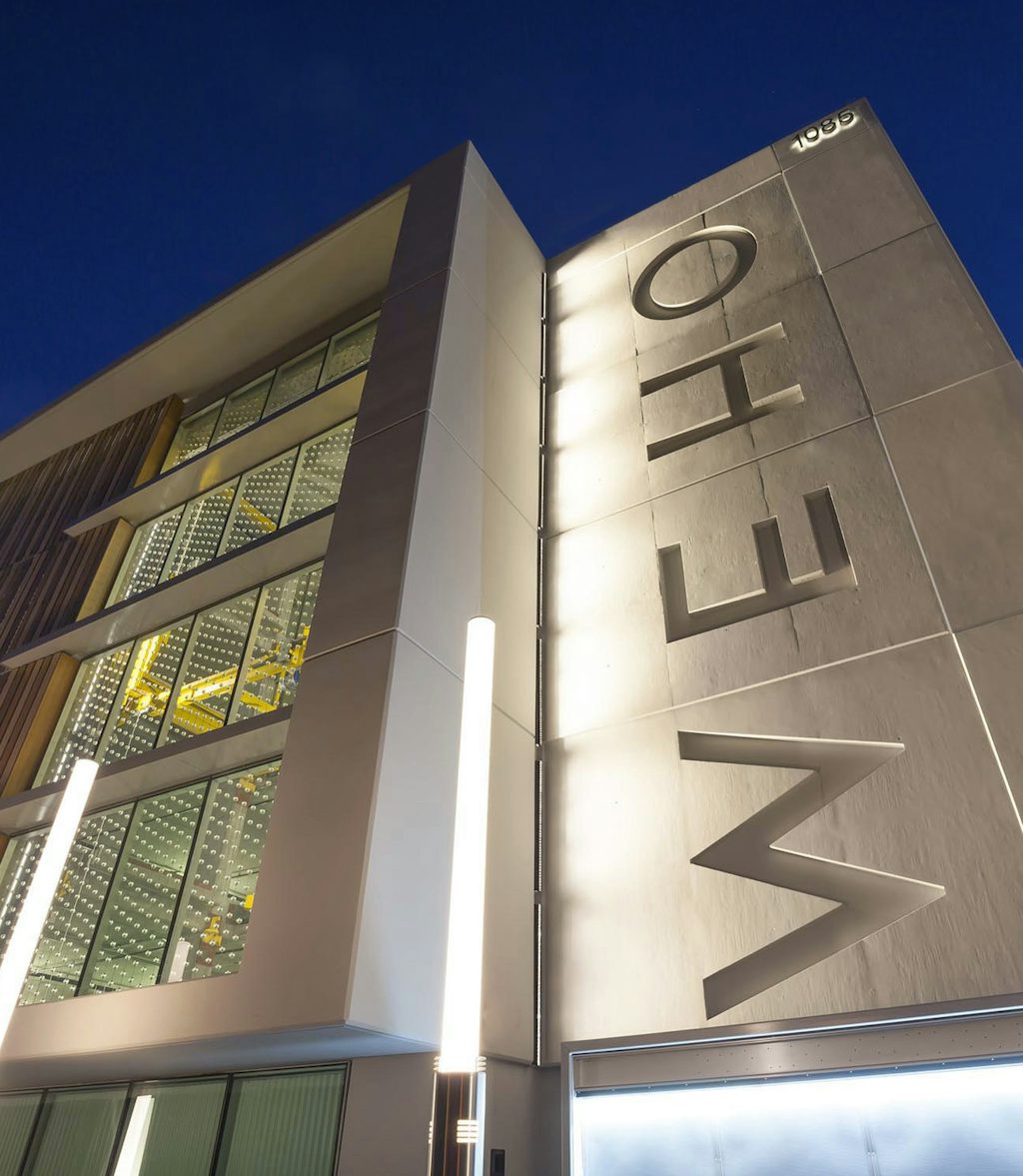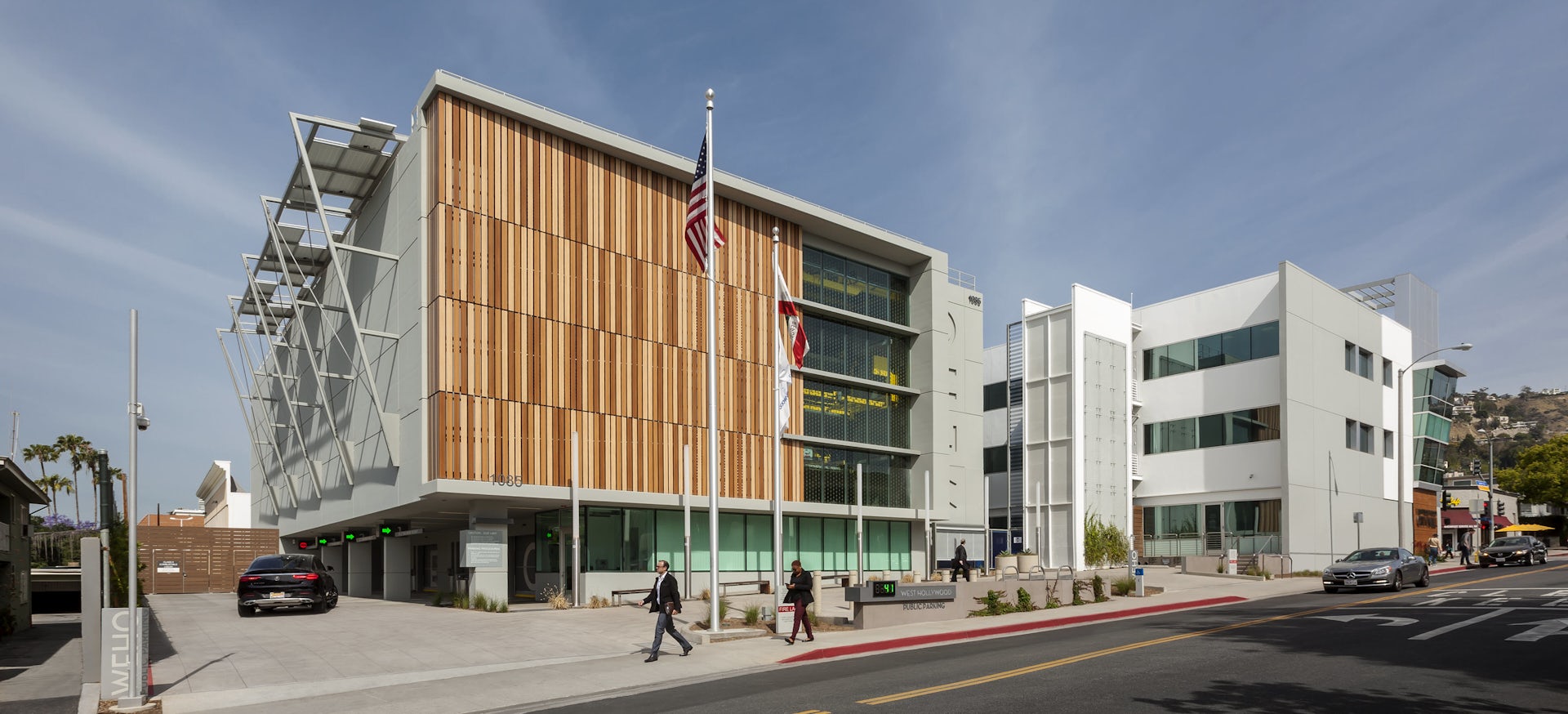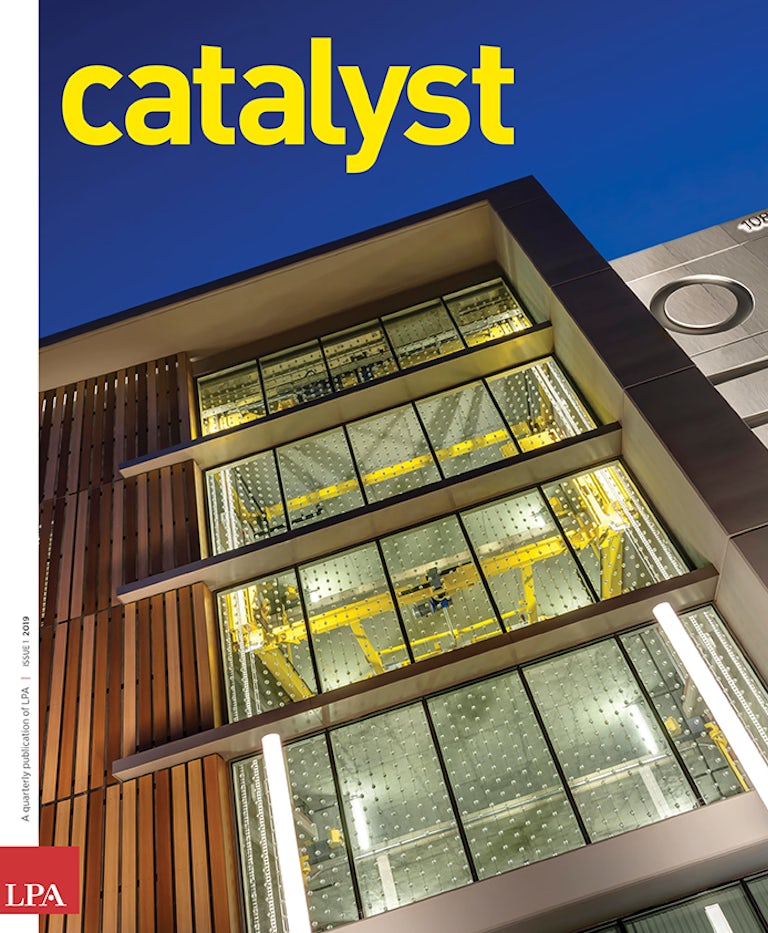The automated, five-story West Hollywood City Hall parking garage changed the dynamic of parking in the city, a dense and diverse neighborhood tucked between Beverly Hills and Los Angeles. The garage, completed in 2016, tripled the number of parking spaces on the site, while creating a model for an energy efficient, sustainable facility.
Dubbed West Hollywood’s “clean, green, parking machine” by Curbed, the garage uses an Automated Vehicle Storage and Retrieval System (AVSRS), designed by engineering firm Unitronics. The robotic mechanism can move 100 cars per hour. The typical retrieval time for a car ranges from five to 10 minutes.
The automated process helped reduce the garage’s footprint on the half-acre site by 40 percent, providing an opportunity to create a 7,000-square-foot public plaza, which is used for civic and community events. The park-like plaza is also home to a large triptych art-banner installation, a collaboration of artist Moncho 1929 and West Hollywood City Poet Steven Reigns.
More than a structure to park cars, the design was “an exercise in urban placemaking,” says LPA principal Rick D’Amato. “The garage is a fundamental shift in how we think about the automobile.” The project was viewed as an opportunity to create community gathering spots and a hub for a more walkable/bikeable neighborhood. “This project is an exploration of doing more with our project sites than simply creating a parking lot,” D’Amato says.
The garage reflects the interests and passions of the vibrant West Hollywood (WeHo) community, in many ways. LPA conducted an extensive community input process, including town halls and a variety of surveys to dive deeply into the interests of the local residents.
“LPA was more than just the designer, they were the city’s partner for this innovative project,” Oscar Delgado, Director of Public Works for the City of West Hollywood, said at the time.
A Next-Generation Parking Garage
West Hollywood’s ‘clean, green, parking machine’ combines technology, community art and energy efficiency.



Elements of the community involvement can be found throughout the design. Lighting, landscaping and the organic elements of the façade help the garage serve as an unobtrusive segue between the commercial buildings and the adjacent residential neighborhoods. Walkways and a bike-sharing station help integrate the garage into the city’s biking and walkability goals.
Art is an integral part of the project. Each of the garage bays features a hand-painted mural by local artist. A large window allows people to watch the automated mechanism park cars and includes a fixed installation by world-renown public artist Ned Kahn, featuring a grid of clear glass spheres reflecting and abstracting the animation of the vehicles inside the garage.
The environmental design also reflects WeHo’s focus on sustainability and creating facilities that conserve energy. By removing the once daily line of cars searching for a spot to park, the garage dramatically reduces CO2 emissions as well as traffic in the local neighborhoods.
About 50 percent of the facility’s energy requirement is supplied by an array of roof-mounted photovoltaic panels. The automated system reduces the need for ventilation and lighting, cutting the daily energy use of the structure, which includes materials made from recycled and recyclable materials.
LPA was more than just the designer, they were the city’s partner for this innovative project.
A robust stormwater system collects 100 percent of the runoff, which is treated and then filtered through a bio-treatment planter before it enters the storm drain system. The stormwater management design has become a case study for permitting applicants in the city. Water conservation was also integrated into the design, including drought-resistant plants and a highly-efficient sub-surface drip system, which irrigates 90 percent of the site.
Ultimately, the garage cost about $1 million less than a traditional garage to build. It also will provide the city flexibility as new transportation technologies emerge, including the potential of the automated system to interface with autonomous cars.
This story originally appeared in Catalyst Issue 1 2019. Subscribe today to receive Catalyst, a quarterly publication that takes a deep dive into design ideas, industry leaders and initiatives.















